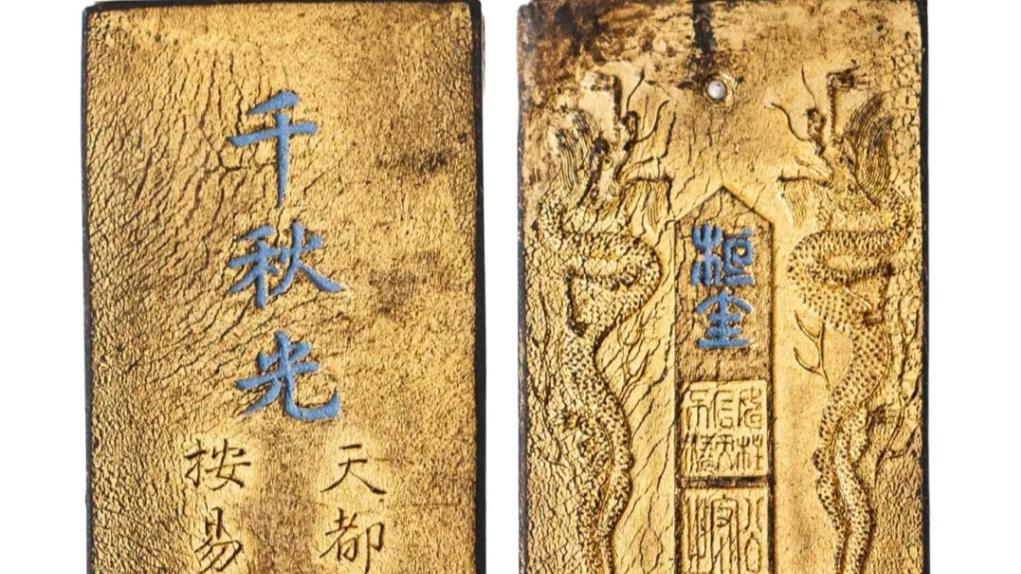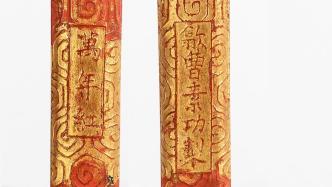
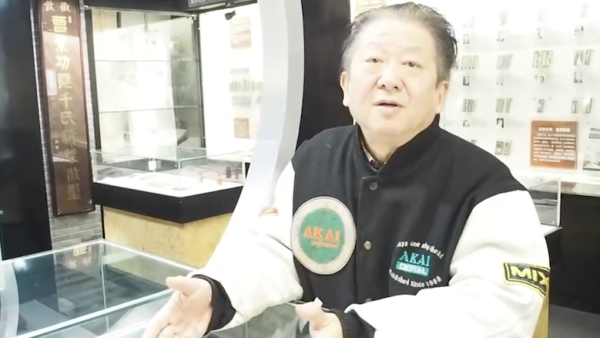
The "Wonderful Works of Ink Garden - Mohailou Colored Ink Exhibition" was recently exhibited at the Shanghai Brush and Ink Museum on Fuzhou Road, Shanghai, presenting dozens of ingots of five-color inks collected by Wang Yi from the Southern Song Dynasty to the present. For a long time, people thought that ink was mostly black, but the precious colored inks of various colors on display broke people's inherent impression of ink ingots.
Wang Yi told The Paper that in the past, color ink was mainly used for painting or approval. It has rich colors and can be preserved for a long time without fading. Color ink is also very rare, because it is made of mineral or plant materials, it is difficult to refine, and it cannot be mass-produced, so it is relatively rare in the world.
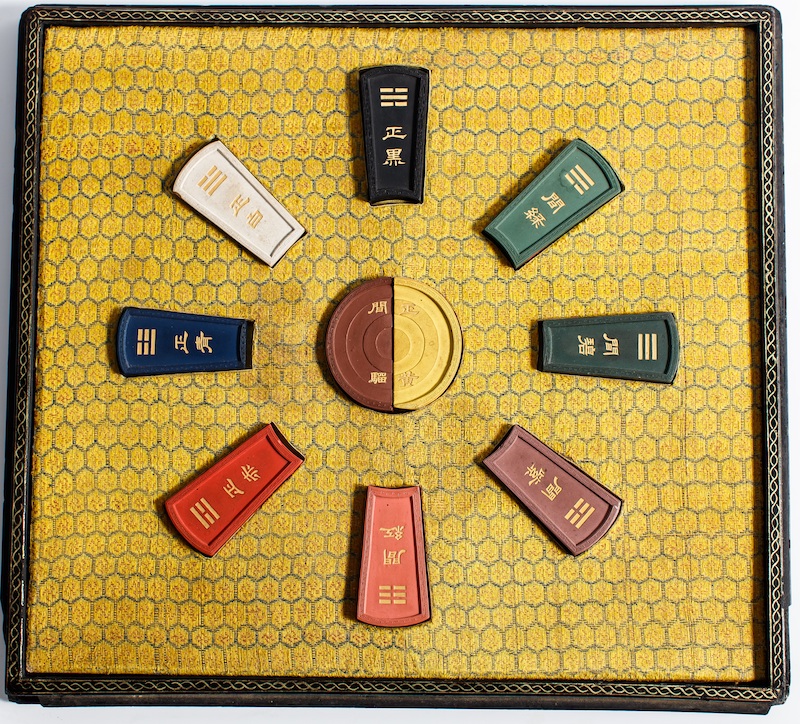
Wang Yi said that he has been collecting ink for more than 40 years and has done special research on ink from different angles. He found that there are very few people who study color ink, and even he has never displayed his color ink collection in a concentrated manner. "I have collected more than 200 pieces of various colored inks from the Qing Dynasty, and it is ingenious to think of holding an exhibition themed on colored inks." Wang Yi said, he hopes that through this display, the public will have a better understanding of colored inks. At the same time, it can produce some help in the study of ink making technology, and his purpose of holding the exhibition will be achieved.

"Ink Fate" Chen Peiqiu

"Ink Fate" Ma Shitu
Wang Yi said that because color ink is rare in the world, its collection threshold is higher than that of ordinary ink. There are also many "color inks" made of chemical raw materials in modern times. If you are not careful, you may "take medicine". Therefore, it is still necessary to study persistently, read more books, accumulate knowledge, see more real objects, and improve eyesight, so that it is possible to receive good ink products.
"Ink is divided into five colors" and "five-color ink"
For a long time, people have been deeply impressed by "the one who is close to the ink is black"; even "ink is divided into five colors" means that the ink color is divided into five levels: burnt, thick, heavy, light, and clear. Many people probably don't know it. There are five colors of ink...
The Chinese character "ink" is a knowing and pictophonetic character. It is from soil and from black, which means that ink is made of black soil and used as ink color pigment for calligraphy and painting. Therefore, people have long believed that ink is black. It can be seen from the dictionary that the meaning of "ink" is not only black pigment, but also other pigments used in calligraphy and painting. The famous ink workshops in ancient my country used to produce colored inks to meet the needs of special writing and painting. For example, during the Kangxi and Qianlong periods of the Qing Dynasty, a large proportion of the tribute inks submitted by Cao Sugong’s ink workshops each year included a large proportion of cinnabar ink for the emperor’s Zhu Zhu and the court officials. There are also many colored inks made of imperial ink and tribute ink molds, all of which are the best in ink.
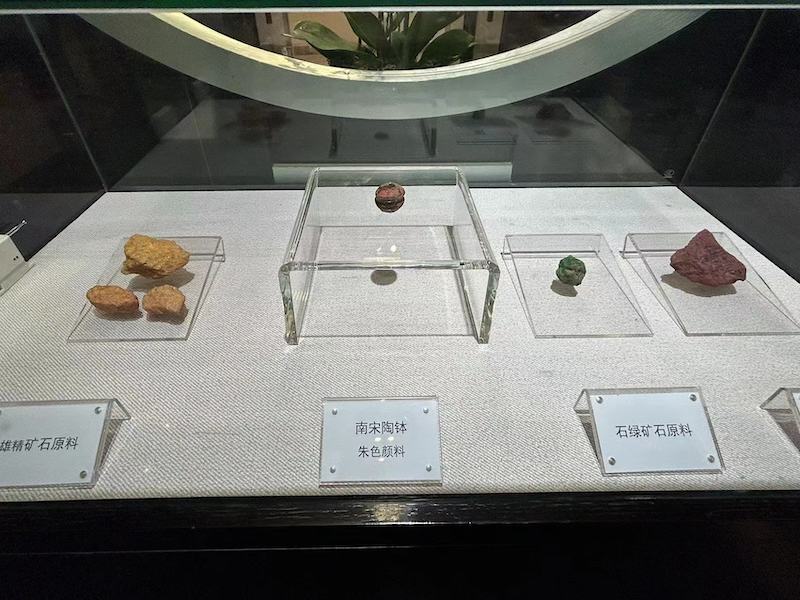
All kinds of ore raw materials on display at the exhibition site
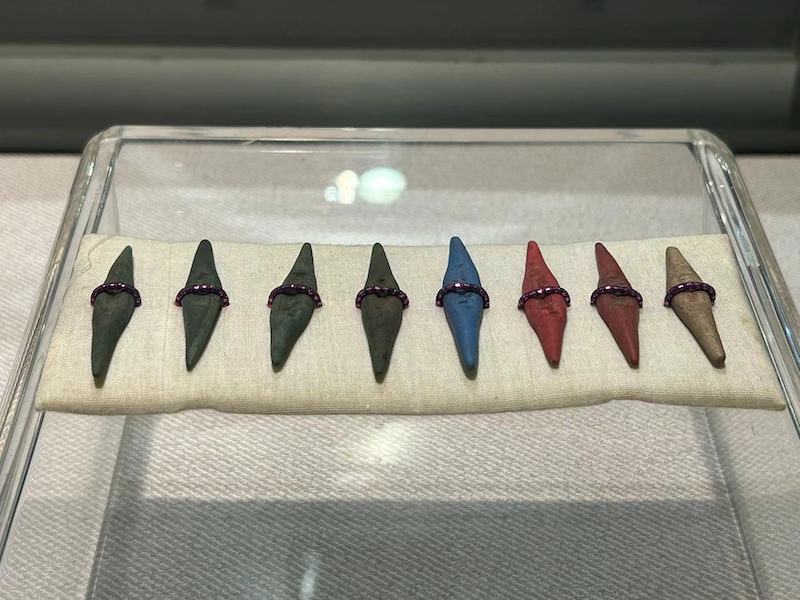
Exhibition site Kangxi Wu Tianzhang style Manchu color ink

exhibition site
The production of colored ink is the same as the general ink-making process, except that black ink ash is replaced by colored pigment raw materials, blended with adhesive glue, and the result is also pounded with a mixing pestle, kneaded, molded, turned to dry in the shade, painted with gold patterns, etc. Various processes are made into colored ink ingots. When in use, it is also ground into juice, and then dipped in a brush and sprinkled.
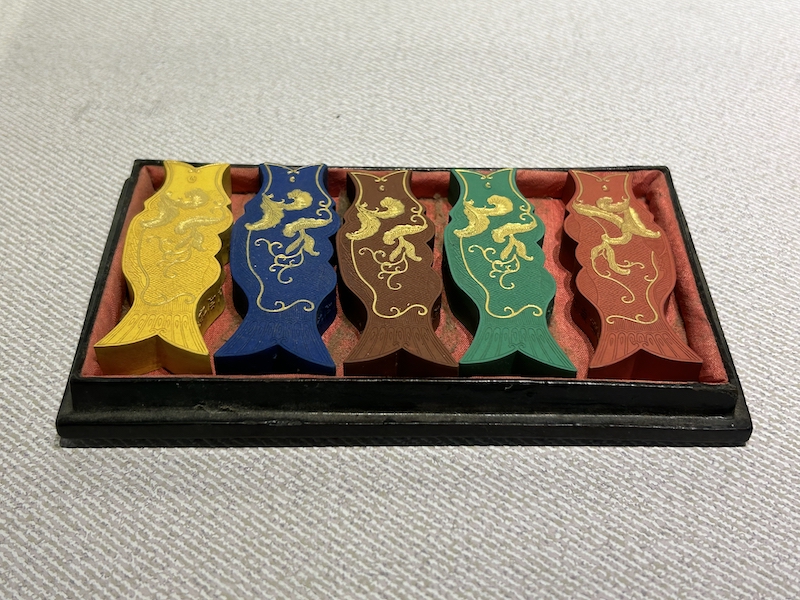
exhibition site
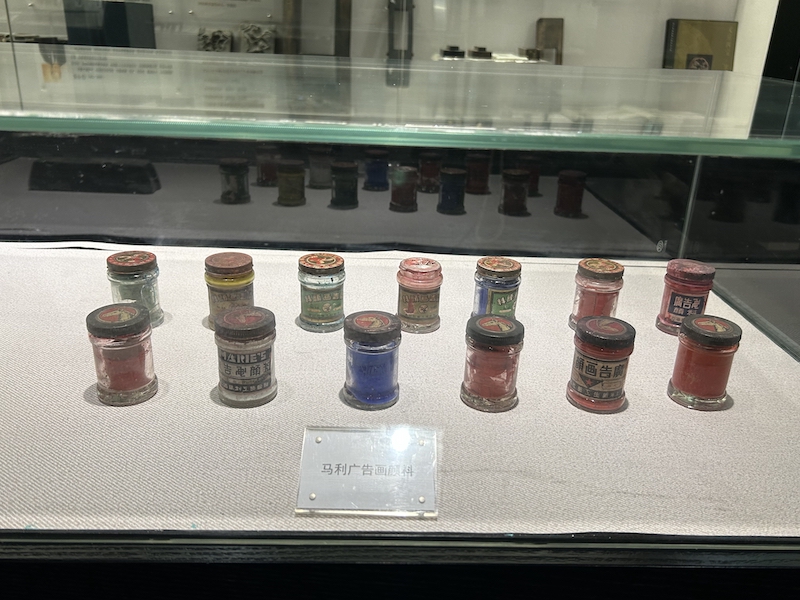
Exhibition site Marley advertising paint
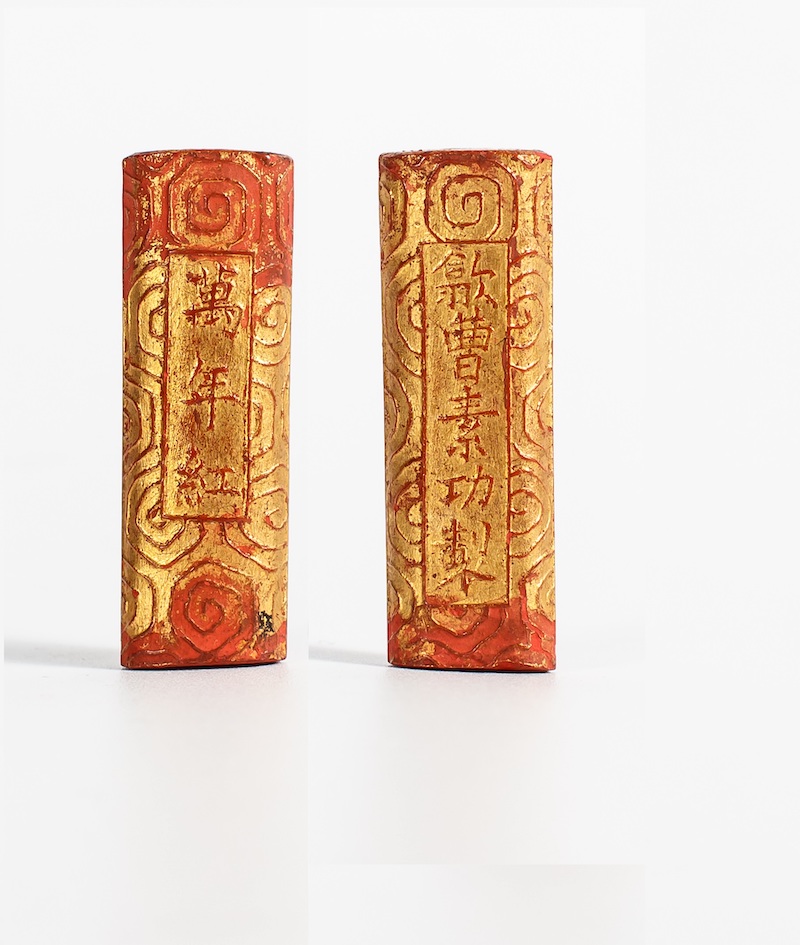
Cao Sugong Wannian Red Tribute Zhumo

Cao Sugong Yao Qianshi Qingmo
The exhibits on display this time include more than 100 pieces ranging from raw ore materials to refined ink products, and even contemporary pigments; their age spans nearly a thousand years from the Southern Song Dynasty to the contemporary era. "Denglong Yipin", "Manwen Stone Blue" in the Qingkang Dynasty, "Five-Colored Ink" in the Qianlong Period, until the Republic of China Shanghai Marley Pigment, there are also colored inks with Japanese, British and other brand trademarks. Like the traditional black ink, the colored ink ingots cast with ink molds also have obvious characters, names and beautiful decorations, which contain rich cultural connotations and humanistic elements. For example, the "Gongzhu" ink presented by Zhang Ying (the father of Zhang Tingyu), a scholar of the Kangxi Wenhua Palace, to the imperial court, the "Imperial System for the People's Livelihood in the Work" cinnabar ink produced by the famous official Tiebao in the Jiaqing period, and the "Imperial Man's Livelihood in the Work" cinnabar ink customized by the Shanfu family in the Tongzhi period. "Six Secrets and Three Strategies" colored inks, "Ice Drinking Room Ink" and "Ren Gong Linchi Ink" custom-made by Liang Qichao, a famous scholar in the late Qing Dynasty; "Wen" colored ink, Hu Kaiwen's "Fenghuangyun" Zhumo, Chasenshan's "Wenyuanzhai", "Pangui" and "Banju" colored ink, the Japanese royal ink workshop "Ancient Plum Garden" made of Zhufeng ink, the British flying lion Illustrated color ink and so on. There is also a color ink set composed of ten colors and eight trigrams patterns in the original lacquer box for drawing gold and drawing dragons, which can be described as dazzling and wonderful. Among the exhibits are several ingots of small ink that are smaller than a baby's little finger, weighing only 3-4 grams; and one ingot of super-large ink, weighing 14.5 kg, engraved on the ink surface with "Picture of West Lake", with scenic spots marked with place names 195 place, astonishing.
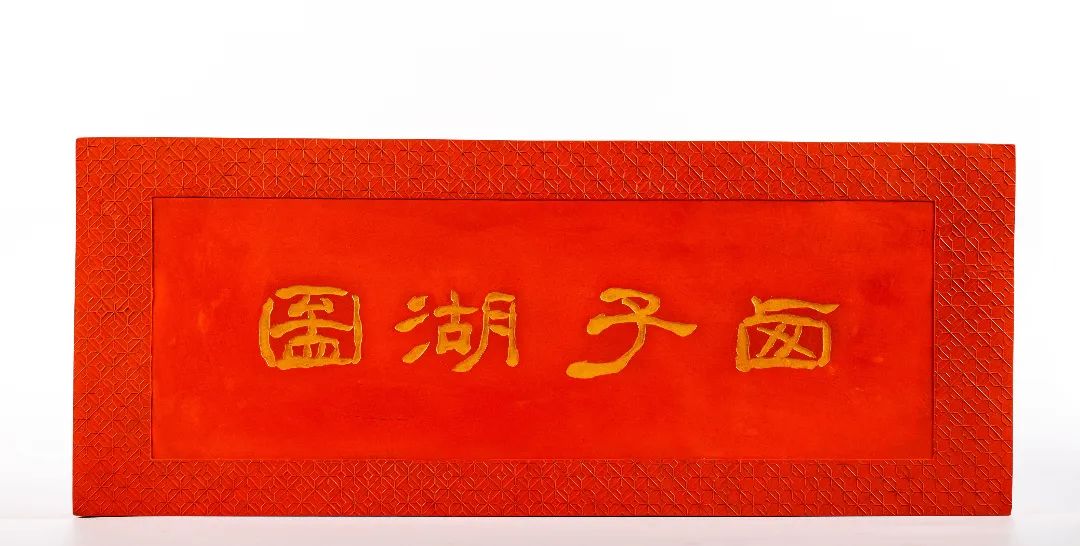
West Lake Map Silver Vermilion Ink

West Lake Map Silver Vermilion Ink
Si is a shabby room, only my ink is fragrant
Ten years ago, a reporter from The Paper visited Mr. Wang Yi. He lived in a husband's house, and his collection almost "squeezed" his entire living space. Seems like it's about to overflow. He owns more than 2,000 ingots of ancient ink, among which there are many well-known literati ordered ink, imperial ink and collection ink, all of which are exquisite.
Wang Yi opened the drawer under the cabinet, carefully took out the boxes wrapped in various cloths, and opened them layer by layer, "There is a gold-covered 'Yu Mo' made by Cao Sugong specially for the emperor; "Pity is like gold" ink; there are "Avalokitesvara ink" and "big scholar modeling ink" made by Hu Ziqing in the Qing Dynasty; there is also an ingot of "Xiaocangshanfang ink" produced by Yuan Mei in the Qianlong period of the Qing Dynasty and "drinking ink" specially used by Liang Qichao. Ice room using ink'..." Lin Lang's ink products filled the entire desk.

Kangxi Zhang Yinggong Zhu Shi Qingmo
China's ancient ink production has a long history, and Hui ink is the most famous. In the Qing Dynasty, Huizhou produced the "Four Great Ink Kings" Cao Sugong, Wang Jinsheng, Wang Jie'an, and Hu Kaiwen, forming the unique status of Huizhou ink. In ancient Huizhou, every household had a collection of ink, and Wang Yi's grandmother was no exception. The first time Wang Yi met Mo was at his grandmother's house in Anhui.
In 1973, Wang Yi saw a piece of Hui ink made in the Republic of China at his grandmother's house, with the words "gold is not exchanged" printed on it. "A piece of good ink is not even exchanged for gold", which left a deep impression on Wang Yi. Over the next few decades, Wang Yi cherished ink products very much, and he could only enter the collection of ink products. The way of collecting seems to have been explained in those words very early.
Wang Yi has practiced calligraphy, worked as a farmer, worker, and editor, and is now a researcher at the Shanghai History Museum. In the 1990s, Shanghai civil society organized a collection exhibition. When Wang Yi went to visit the exhibition, he found that these folk collectors had collections of calligraphy and painting, porcelain, brushes, and inkstones, but no ink. Thinking that there were still a few ingots of ink handed down by his grandmother in his home, Wang Yi had the idea of collecting ink, "Xing Ke could fill a gap in folk collections."
There are many types of ink, and most of the more sought-after inks are those with exquisite appearance and historical allusions, such as rare ornamental ink, collection ink (set ink), literati custom ink, imperial ink, commemorative ink, etc. Ornamental ink is mostly small and exquisite, and the ink mold is finely carved. It is not mainly used for calligraphy and painting, so it has a strong artistic beauty; collection ink (set ink) is a collection of ink with decorative famous products, mostly decorated with gold and silver colors, which looks magnificent. ; Customized ink for literati refers to the literati or senior political officials who participate in the design and production or entrust ink workers to do it according to their own wishes, reflecting the taste and aesthetic tendency of the literati; imperial ink refers to the ink used by the emperor himself in the feudal era.
At the beginning of the collection, Wang Yi also liked to stare at the things of big names. He especially liked the literati set ink of the Qing Dynasty. There are three or four hundred ingots of literati set ink in his collection, including Zuo Zongtang, Zeng Guofan, Li Hongzhang, Wu Changshuo, Ren Bo Famous political figures and calligraphers and painters. Zuo Zongtang's set of set ink is a complete set of 8 pieces, with pictures and texts in the form, and even the box is original. Liang Qichao's special "Ink for Ice Drinking Room" is a single piece of long strips. The words "Ink for Ice Drinking Room" in silvery white are particularly prominent on the black background. It was created by one of the "Four Ink Kings" in 1921 Made by Cao Sugong, it is one of Wang Yi's favorite collections. Wang Yi met at an antique market in Beijing, and immediately exchanged a new leather jacket for it.
Later, Wang Yi got acquainted with several old gentlemen such as Zhou Chaoran and Guo Ruoyu, who did a lot of research on cultural relics or ink. Zhou Chaoran is far away in Beijing, and Wang Yi travels to Beijing several times a year to discuss ink affairs with the old man. During the conversation, Zhou Chaoran reminded him, "Pay attention to the details of Mo". This sentence inspired Wang Yi, "It turns out that collecting things of big names does not have to be chasing, even doing some work to fill in gaps is also very meaningful, such as collecting some small names or unknown things that can fill in the history of ink. "
"Now it seems that their thinking is advanced." Wang Yi said, "It is not uncommon to have Cao Sugong's ink, but some ink products from small ink factories that have been ignored by everyone may never be available again after they disappear, so It is necessary to continue this period of history.” After owning many famous high-quality goods and orphan products, Wang Yi will now focus on the inks used by some Shanghai-style calligraphers and painters, the inks produced by many closed small Shanghai ink factories, The ink produced in various provinces and cities in China, as well as some ink books, ink lists, ink stamps, ink models, etc., are intended to complete the history of ink in China.
Wang Yi said that if conditions permit, he will also use the earliest ink that can be found among the people in China, as well as some representative inks, such as the literati ink of the Qing Dynasty, and various types of ink: medicine ink, five-color ink, and cinnabar ink , pine smoke ink, lampblack ink, etc. are all collected.
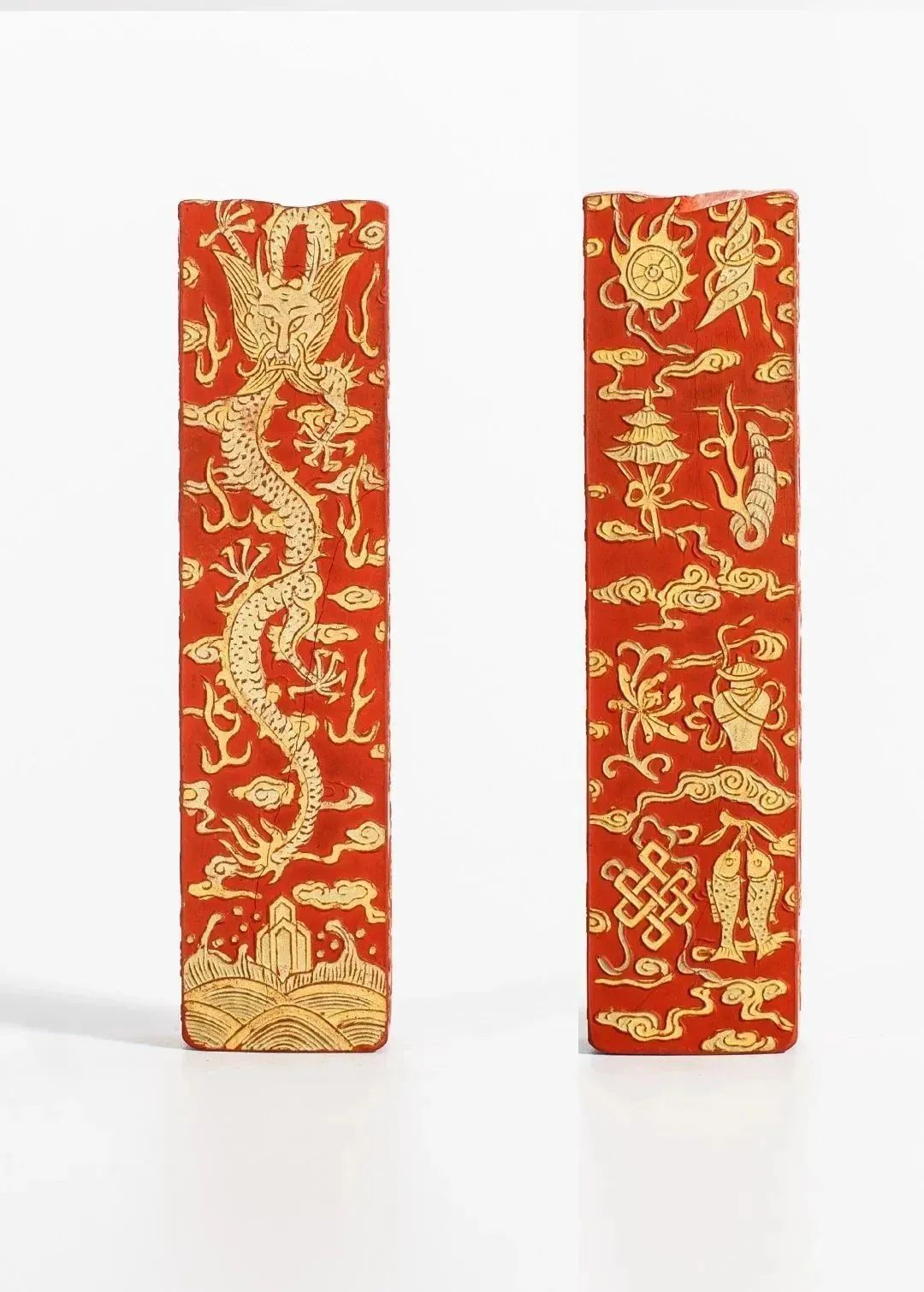
Clear cinnabar ink
Over the past 20 years, Wang Yi has collected more than 2,000 ingots and more than 1,000 pieces of various ink products, of which about 90% are old inks, and most of the old inks are Ming and Qing inks. He told the reporter of "Oriental Morning Post·Art Review" that the oldest in his collection are two ingots of ancient ink from the Han Dynasty, and the latest is the commemorative ink of the Shanghai World Expo; the one that is not very good but expensive is an ingot from the Song Dynasty , He spent more than 10,000 yuan to receive it in an antique city in Shanghai. Half of the ink was glued to the classmate table, and it was covered with loess, which was completely inseparable due to the age. Wang Yi said that his hands trembled when he saw this thing, because he was very excited.
Wang Yi said that despite the variety of inks on this table, it may sound long-winded, but it can be summed up in two things. "One person is one thing. People are famous people, and things are important historical events."
Q&A
favorite ten questions
Q: What is your favorite collection?
A: Liang Qichao's "Ink in the Ice Drinking Room".
Q: What is the earliest collection in memory?
A: A piece of "gold does not change" ink made during the Republic of China in my grandmother's collection.
Q: How did you embark on the road of collecting?
A: Being influenced by family members is also my interest.
Q: What is your "way of collection"?
A: "Gold does not change" for favorite ink products.
Q: What channels are the collections mainly collected through?
A: Antique market, door-to-door search, gifts from friends.
Q: Do you know how many collections you have?
A: More than 2,000 ingots (more than 1,000 pieces in groups).
Q: Do you consider yourself a collector?
A: Collectors.
Q: Can you give away your collection or donate it one day?
A: Willing to donate if the country needs it.
Q: What do you think is the greatest pleasure that collecting brings you?
A: By collecting ink, it brings me confidence and makes me feel that I am different.
Q: Have you encountered counterfeits or setbacks in your collection?
A: Growing up on "taking medicine", in the past, when the brain got hot, it was painful to buy imitation products at a large price.
(Part of "Wang Yi: This is a humble room, only my ink is fragrant" refers to the interview with the author of the same name in "Oriental Morning Post·Art Review")
